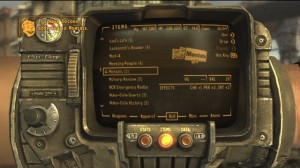Mosaic
Under an uncharacteristically clear London sky, I looked behind me as I rode across the playground on a pink scooter that was much too small for me. I was being chased by two three-year-olds, the make-believe cops in rapid pursuit of their robber. They shouted stop, stop! and I slowed down only enough to keep myself a foot ahead of them, mocking fear at my inevitable capture. In this moment, as I smiled broadly at the children chasing me, I realized how much fun I was genuinely having. In this small, enclosed playground in Westminster, everything had changed.
I was intimidated by the families that came to Cardinal Hume at first. They were all impoverished, and many of them recent immigrants. As part of my internship in the day care center, I would be taking care of their small children twice a week. It seemed strange to me that in the heart of Westminster, among the high rises and only blocks from Parliament Square, there could be such poverty. However, maybe it shouldn’t have been. In the past twenty years, the number of immigrants in the UK has doubled to 8 million, with a third of these people living in London. The city is one of the most diverse in the world, and people have come for reasons that are as numerous as their origins- for work, refuge, profit, personal development.
Immigrants have not been received warmly by many native Brits, who feel that they’re losing out in the competition for jobs and housing; politicians have added to the tension. Prime Minister David Cameron pledged in 2010 to pass legislation that would limit the number of annual immigrants to below 100,000; the current number of migrants is three times this. The United Kingdom Independence Party (UKIP) plans to go into the next election with a promise to ban any immigration in Britain for five years, while immigration policy is rethought. While London does hold a great appeal for many foreigners, many of these people struggle with the politics and ethnic tensions of immigration.
Many of the families I met at Cardinal Hume were immigrants from Eastern Europe or the Middle East. Their origins and thick accents, as much as I tried to deny it, did make me uncomfortable in the beginning. Back in Iowa, I had never been around people of a different religion or culture, and I was nervous that I wouldn’t be able to make a connection with the families. I looked through the glass doors that led out to the small playground, and the iron gates that surrounded it. I watched the women in hijabs as they pushed strollers through the gates and down the ramp from outside each morning, small kids teetering behind them. I often wondered what their hair looked like underneath the scarf; was it cut short or long, of a dark chestnut color, curly?
What would these women think of me, a young, foreign girl? Will they hate me because I’m American? I worried that these families had been displaced from their home countries because of political unrest or wars, which the United States may have played a part in. What if they were from Iraq or Afghanistan, had family who became casualties of war? Or the only American they ever saw was dressed in combat gear with a gun in hand, and the images of war would forever smear their perception of the US? However, the women scanned me without recognition; perhaps they saw my blonde hair, blue eyes, and fair skin and thought that I was another one of the Danish students who came to Cardinal Hume for a student teaching opportunity.
Continue reading →




